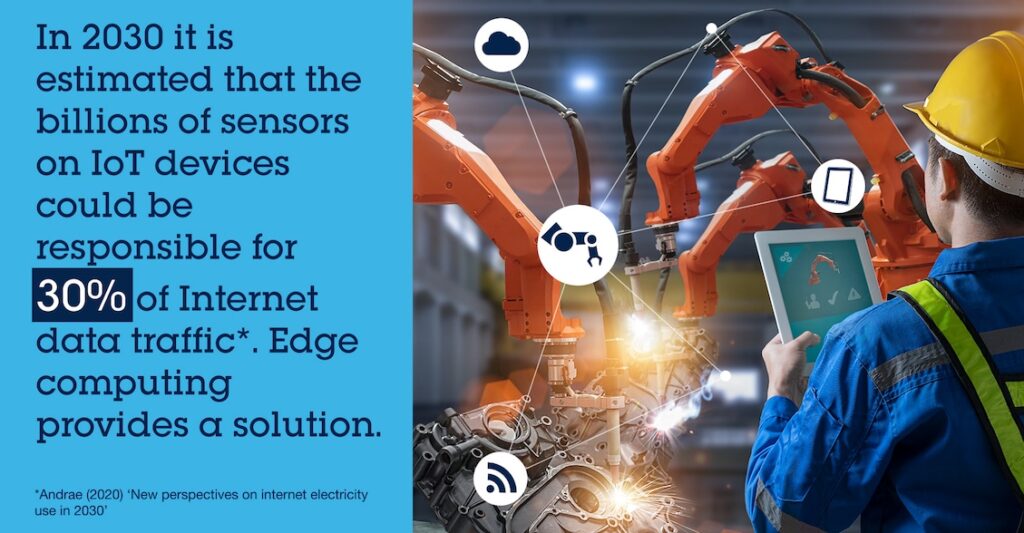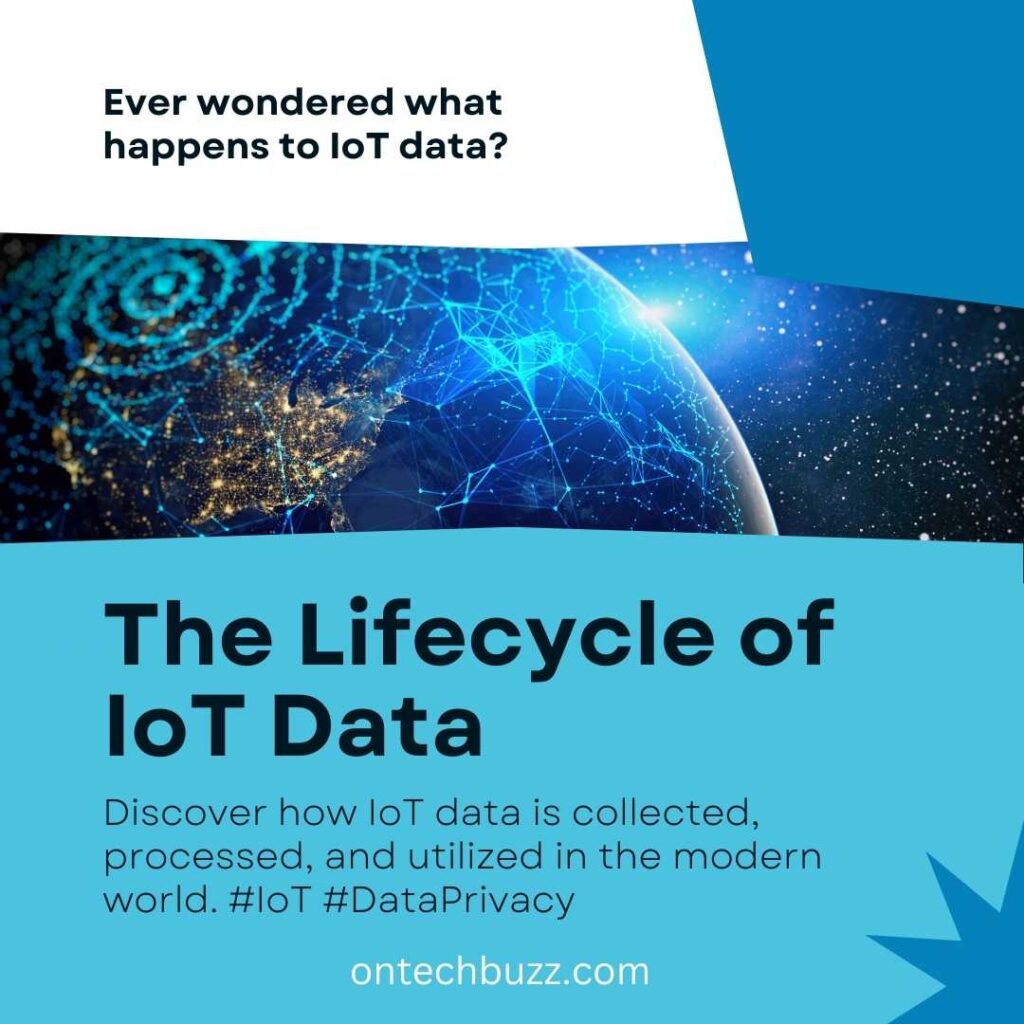
Uncover the intricacies of what happens to the data gathered by IoT sensors. Explore our in-depth insights on the lifecycle and utilization of IoT sensor data. Stay informed and make informed decisions in the world of connected devices.
Data gathered by IoT sensors is analyzed for insights and stored for future use. These data points help in optimizing performance and predicting maintenance needs.
The Internet of Things (IoT) revolutionizes how we interact with our environment by generating vast amounts of data. Every second, countless sensors across the globe feed information into networks, providing real-time analytics that drive decision-making and automation. This wealth of data empowers businesses to refine their operations, enhance customer experiences, and develop new products and services.
At the forefront of this digital transformation, companies employ advanced data analytics tools to sift through information, extract valuable insights, and leverage these findings to gain competitive advantages. The strategic use of IoT sensor data is pivotal in fostering innovation, ensuring efficiency, and paving the way for a smarter, interconnected future.
Table of Contents
The Journey Of Iot Data

Data generated by IoT sensors embarks on a complex journey before yielding useful insights. Initially, the sensors capture data continuously, which is then transmitted to a central system. This system decides whether the data is processed in real time for immediate action or sent to a storage solution for long-term analysis.
Real-time processing involves immediate examination and often necessitates sophisticated algorithms to provide instant feedback or control mechanisms. This is critical in scenarios where timing is essential, such as emergency responses or automated reactions in industrial processes.
On the other hand, some data may be stored for future analysis, identifying trends or enhancing machine learning models. Regardless of the method, it’s vital to ensure data integrity and security. Measures like encryption during transmission and robust authentication protocols are implemented to secure sensitive information from potential breaches or unauthorized access.
| Process | Objective | Security Measures |
|---|---|---|
| Real-time processing | Immediate analysis for quick decisions | Encryption, real-time anomaly detection |
| Storage | Data accumulation for trend analysis | Access controls, secure storage protocols |
Insights From Iot Data Analysis
The data gathered by IoT sensors undergoes a transformative journey, where raw data evolves into actionable insights. This process is critical across sectors, as organizations seek to better understand their operations, predict future trends, and make data-driven decisions.
Key Performance Indicators (KPIs) serve as benchmarks for success in various industries. For instance, manufacturing firms might track production efficiency, while healthcare providers may monitor patient recovery rates. Each sector relies on tailored KPIs to gauge performance and strive for improvements.
At the forefront of leveraging IoT data is predictive analytics. This technique applies advanced analytics and machine learning to interpret patterns, enabling businesses to anticipate maintenance needs or demand fluctuations before they occur. This proactive approach is revolutionizing industries by elevating the standard for operational efficiency and customer satisfaction.
Iot Data Management Challenges
As the Internet of Things (IoT) continues to expand, the sheer volume of data generated by IoT sensors poses significant IoT data management challenges. Scaling data storage and processing capabilities is crucial to accommodate the exponential growth of data. This requires a robust and flexible infrastructure that can not only store vast amounts of data but also retrieve and process it efficiently.
Organizations must also balance cost and efficiency in their IoT deployments. It is essential to implement cost-effective storage solutions without compromising data accessibility or processing speed. Adopting scalable cloud services and edge computing strategies can help in managing costs while maintaining performance.
Another critical aspect is navigating privacy and data protection laws, which vary widely by jurisdiction. Compliance with regulations such as GDPR and CCPA necessitates stringent data handling and storage policies. Companies need to ensure that personal data is collected, used, and stored in accordance with these laws to avoid legal repercussions and maintain consumer trust.
Smart Decisions With Iot Intelligence
Data gathered by IoT sensors is pivotal in optimizing operational efficiency. This information enables organizations to understand machine performance in real time, leading to the anticipation and prevention of potential failures before they occur. Implementing predictive maintenance schedules based on sensor data minimizes downtime and maximizes productivity.
Concerning enhancing customer experiences, IoT intelligence provides insights into user interactions with products or services. Companies can exploit this data to tailor customer experiences, ensuring they are both satisfying and relevant. Personalized recommendations and swift issue resolution are just two examples of how IoT data can be applied to improve the customer journey.
Revolutionizing Industries With Iot Data
The integration of IoT sensors in healthcare is streamlining patient care and creating avenues for remote health monitoring. Hospitals are leveraging these technologies to develop systems for real-time health tracking, which aids in early diagnosis and intervention. Significantly advancing the field of telemedicine, these devices enable continuous data transmission between patients and healthcare providers, enhancing treatment efficacy and patient outcomes.
Smart manufacturing is another example of IoT’s transformative power, where sensors are critical for data-driven decision-making. These sensors monitor production lines, predicting maintenance issues before they occur. Automating quality control, they yield a higher consistency in products while optimizing resource consumption, thus reducing waste and increasing efficiency.
IoT sensors are central to the evolution of smart cities, contributing to efficient urban management and improved civic services. They collect data on various aspects, such as traffic flow, resource usage, and environmental conditions, facilitating informed urban planning decisions. By implementing these insights, authorities can enhance public safety, manage energy consumption, and improve overall city sustainability.
Bridging The Gap With Big Data Solutions
The integration of IoT sensors with cloud services is synonymous with efficiency and scalability in data handling. This process ensures that data collected by sensors can be stored, analyzed, and managed seamlessly. The synergy between IoT devices and cloud computing platforms allows for a potent framework, where data is not just accumulated but also made readily available for real-time analysis. This level of interconnectivity paves the way for advanced analytics and smarter decision-making processes.
IoT platforms play a crucial role in the orchestration of data flow from IoT sensors, providing a structured environment for the data to be processed and interpreted. These platforms serve as the backbone for data integration and workflow automation, ensuring a coherent and efficient approach to handling vast datasets. Through sophisticated data orchestration, IoT platforms facilitate the transformation of raw sensor data into valuable insights, enhancing the potential of IoT ecosystems across various industries.
From Data To Dollars
The monetization of IoT data involves a variety of models, each leveraging the intrinsic value of the information collected by sensors. One such model is data as a service (DaaS), where insights derived from IoT are provided on a subscription basis. Another avenue is enhancing existing products or services with data insights, thereby creating added value for customers and a competitive edge in the market.
Comprehensive partnership frameworks also play a critical role in this ecosystem. Businesses may collaborate by merging IoT data streams, thereby creating new opportunities for innovation and monetization. These collaborations can lead to shared revenue models where partners jointly benefit from the commercial exploitation of gathered data.
| Monetization Model | Description |
|---|---|
| Data as a Service (DaaS) | Subscriptions to data insights from IoT devices |
| Product/Service Enhancement | Data insights improve existing offerings |
| Partnership & Collaboration | Joint ventures to innovate and monetize data |
Future Iot Data Trends
Edge computing is swiftly transforming the landscape of data processing within the Internet of Things (IoT). By processing data closer to the source, edge computing alleviates bandwidth pressure and reduces latency, enhancing real-time data analysis and decision-making.
Simultaneously, AI-driven analytics are developing to decipher increasingly complex data patterns. These intelligent systems can predict maintenance needs, optimize operations, and personalize user experiences by learning from vast sets of IoT-generated data.
To support escalating data volumes, actions are being taken towards ensuring sustainable IoT growth. This involves improving energy efficiency, leveraging green technologies, and crafting scalable IoT infrastructures that can handle the proliferation of connected devices without compromising environmental goals.

Credit: www.cio.com
Frequently Asked Questions For What Happens To The Data Gathered By Iot Sensors
Where Does Iot Data Go?
IoT data typically goes to cloud-based storage systems or local servers for processing, analysis, and subsequent decision-making. It can also be utilized in real-time applications for instant insights.
How Data Is Collected By Sensors In Iot?
Sensors in IoT devices collect data by measuring physical quantities like temperature, motion, or light. They convert these measurements into digital signals that IoT systems can interpret and analyze for various applications.
How Does Sensor Data Go From Device To Cloud?
Sensor data transfers from devices to the cloud through a process involving data capture, transmission via networks, and storage on cloud servers for processing and analysis.
Who Owns Data From Iot Devices?
Ownership of data from IoT devices typically rests with the device’s manufacturer or service provider, though it can vary based on user agreements and local laws. Users generally retain some rights to their personal data.
Conclusion
As we’ve explored, IoT sensor data’s journey doesn’t end at collection. It’s processed, analyzed, and utilized to enhance our daily lives, fueling advancements in various industries. With proper management and security, this information can transform our interaction with technology, ensuring a smarter, more connected future.
Embracing these innovations responsibly will lead the way to an era of unprecedented efficiency and convenience.
2 thoughts on “What Happens To The Data Gathered By Iot Sensors: Insights Unlocked”